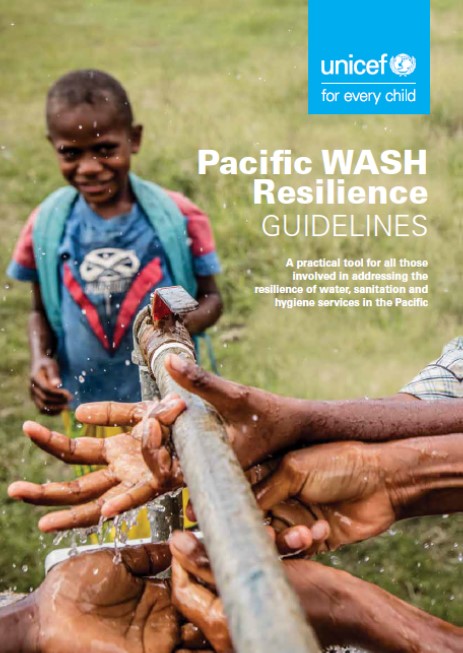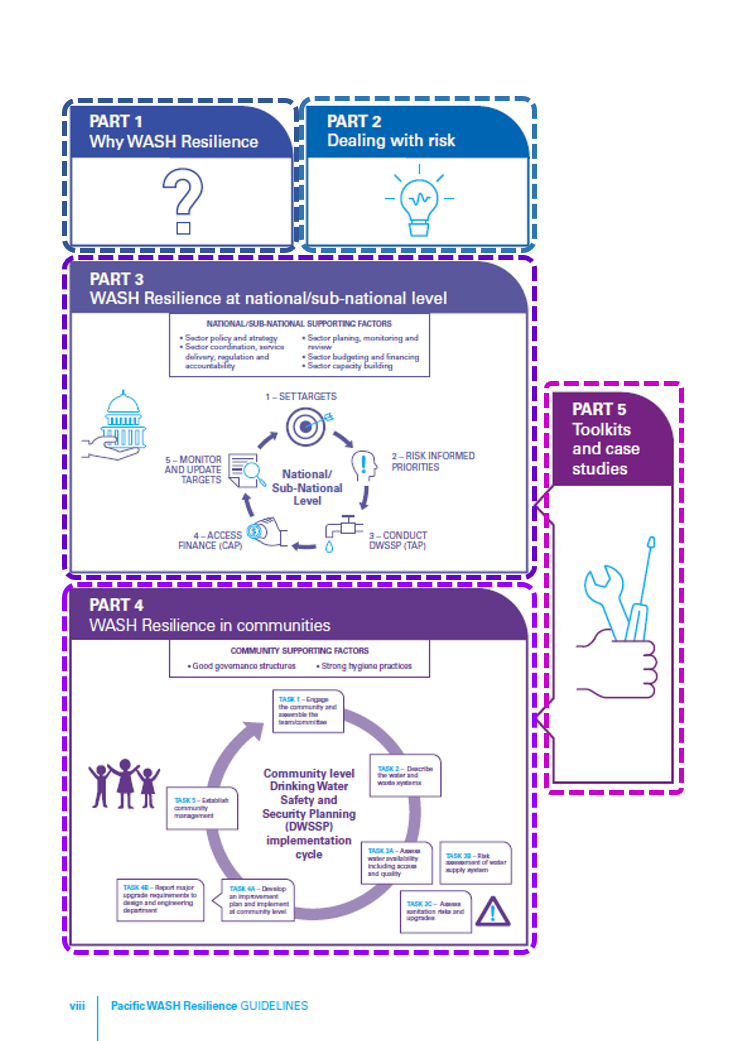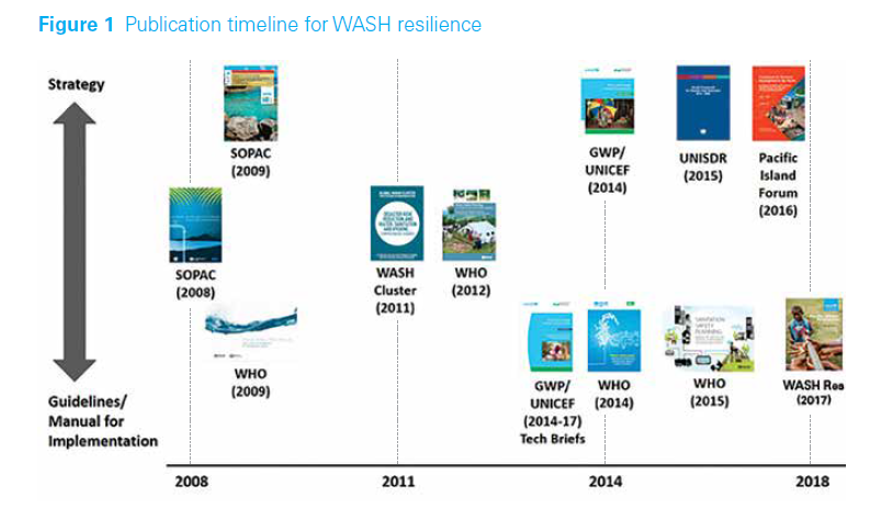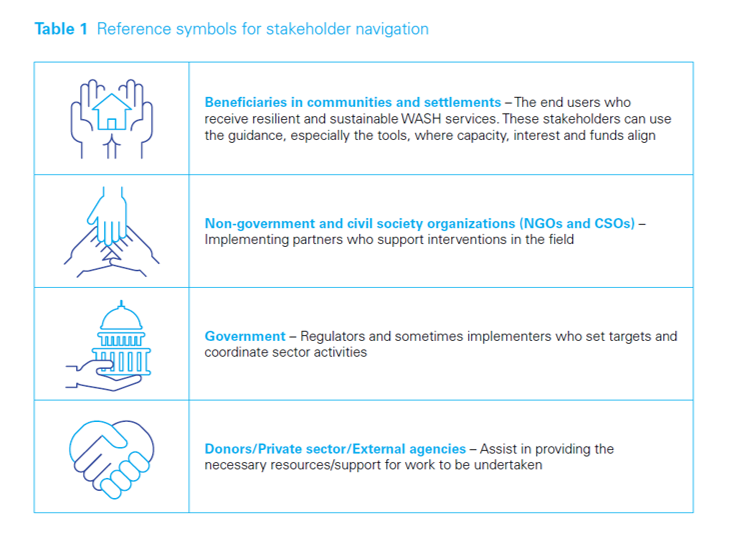About this Guide
Pacific WASH Resilience GUIDELINES
A practical tool for all those involved in addressing the
resilience of water, sanitation and hygiene services in the Pacific

Purpose
Overall
“The guidelines are written to assist a number of WASH stakeholders in delivering sustainable solutions that can adapt to climate and disaster risks.”
WASH Stakeholders
Primary users
WASH professionals from government, NGOs and CSOs to improve the provision of sustainable and resilient WASH services
Reference/Secondary users
Government regulators and donors to obtain reference information on the Pacific WASH resilience approach
Beneficiaries of the guidelines
Communities and individuals, with a focus on children, within the Pacific region

Structure of this guide
PART 1 – Why WASH Resilience
Introduces WASH resilience, the rationale for the approach and provides an overview of a recommended process for implementation.
PART 2 – Dealing with risk
Provides background information on risk and how to utilize a risk-based approach in WASH programming.
PART 3 – WASH Resilience at national/sub-national level
Describes strengthening the national and sub-national enabling environments to support the work of implementing partners in the provision of sustainable and resilient WASH interventions.
PART 4 – WASH Resilience in communities
Details step-by-step guidance for implementers engaging at the community level using Drinking Water Safety and Security Planning (DWSSP).
PART 5 – Toolkits and case studies
Provides tools and case studies that support the implementation of the WASH resilience approach.
IMPLEMENTATION TOOLKIT LINK

Relationship to other publications

Key Documents
- 2008/09 – SOPAC outline the benefits of Water Safety Planning
- 2012-14 – WHO promote DWSP for communities
- 2014-present – DWSP is highlighted as a key resilience tool with GWP and others
How the guideline is organised


The guidelines support the diverse WASH stakeholders’ needs. For navigation reference symbols are utilised with a guide at the beginning of each section
Parts 1 and 2 are recommended for all users, Part 3 is recommended for government stakeholders, with Part 4 aligned to implementers. Part 5 is referenced throughout the document
